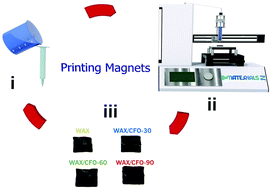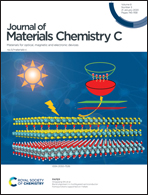Reconfigurable 3D-printable magnets with improved maximum energy product
Abstract
In conventional magnets, neodymium with added heavy rare-earths is used in order to induce high output and size reduction. But as deposits of heavy rare-earths such as dysprosium (Dy) and terbium (Tb) are disproportionately distributed, it is important to reduce the amount used due to supply issues and material costs. Additionally, the use of rare-earths in applications that only need modest magnetic properties is disadvantageous and complicates their low-cost production in on-demand shapes. In this paper and as a new concept, reconfigurable rare-earths-free Wax/CoFe2O4 composite magnets were fabricated through 3D-printing. The evolution of magnetic properties was studied as a function of the magnetic field and CoFe2O4 ferrite content, allowing one to tune the magnetic response of permanent magnets. It was shown that saturation and remnant magnetization increase monotonously with ferrite content, reaching maximum values of 38.6 emu g−1 and 22.1 emu g−1, respectively, for the sample with 90% in weight of CoFe2O4 (wt%). On the other hand, the coercive field (≈2500 Oe) remained constant for all samples. Additionally, the addition of ferrite nanoparticles into Wax increased the Young's modulus (from 0.06 GPa to 0.47 GPa) and improved the thermal stability of the matrix as shown by the increase of the maximum degradation rate temperature and the temperature at which 25 wt% of the sample is degraded (from 412 °C to 429 °C and from 393 °C to 424 °C, respectively). In addition, the (coercive field) × (remanence field) maximum energy product (HC × BC)MAX, which is the figure of merit of permanent magnets, was evaluated, with the value obtained being the highest reported in the literature for CoFe2O4-based magnets (i.e., 4.44 MG Oe for the sample with 90 wt% of ferrite content). Thus, the present study allowed one to establish a new way to prepare reconfigurable printable magnets based on Wax/CoFe2O4 nanoparticles for advanced technologies.

- This article is part of the themed collection: Precious Elements


 Please wait while we load your content...
Please wait while we load your content...